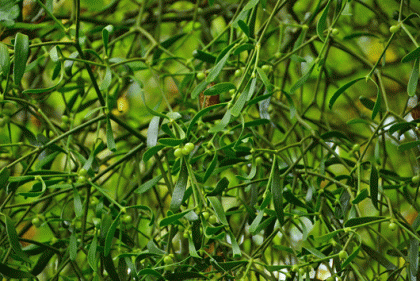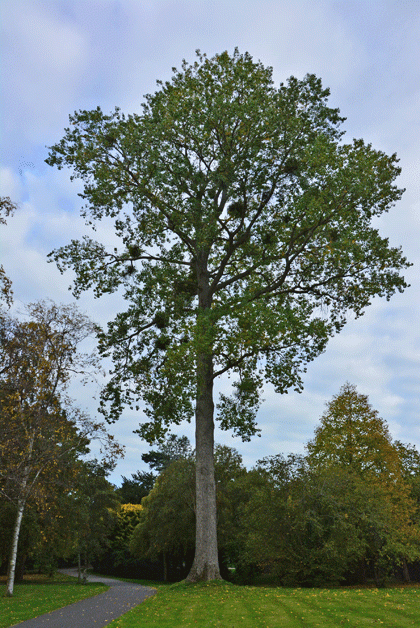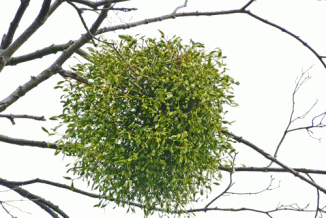A hemiparasitic plant species, Mistletoe is not very widespread, being found principally in trees growing in just a handful of locations scattered around Ireland. It is a perennial plant that roots itself in the bark of trees such as Hawthorn, Lime, Apple, Poplar and Willow. It is quite woody with repeatedly forking branches which form large spheres up to 2m across. In February, tiny little green-yellow flowers are borne in tight clusters at branch junctions, each having four stiff, short petals. This species is dioecious, male and female on separate plants, the male with stalkless anthers while the females have stalkless stigmas on the ovaries. Later in the year, there are clusters of round, sticky, white berries 6-10mm across. The wing-like leaves are in opposite pairs, quite leathery in texture and yellowish-green. This is not a native plant but one which is classified as a rare garden escape. It is bird sown and legend has it that the seeds are sown by the Mistle Thrush, hence its common name. As the berries, which are highly poisonous to humans, are extremely sticky, the birds wipe their bills against the bark of the trees and in this way the seeds are transferred onto the tree. From the seeds, a type of root called a ‘haustorium’ grows, attaching the seed to the host and enabling the seed to draw nutrients from the host tree.
I first saw Mistletoe in France in 1980 and then again at the National Botanic Gardens in Glasnevin in 2015 on a Hawthorn tree which is where I photographed the flowers. The taller tree is a Poplar, also at the National Botanic Gardens.
If you are satisfied you have correctly identified this plant, please submit your sighting to the National Biodiversity Data Centre




